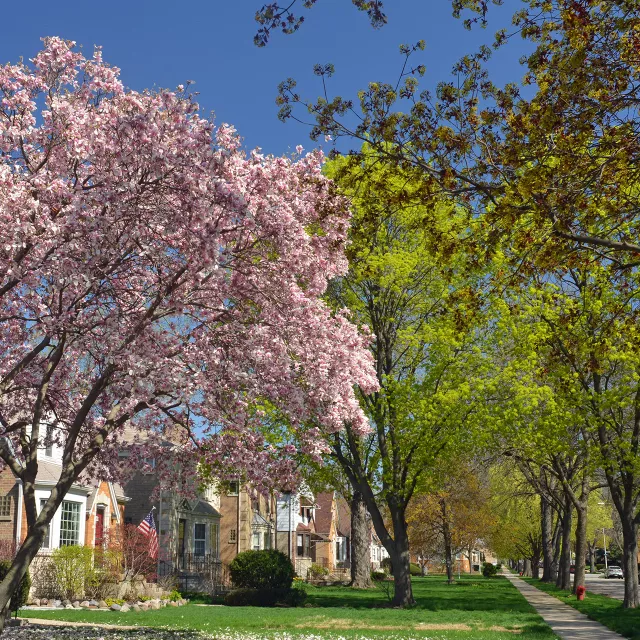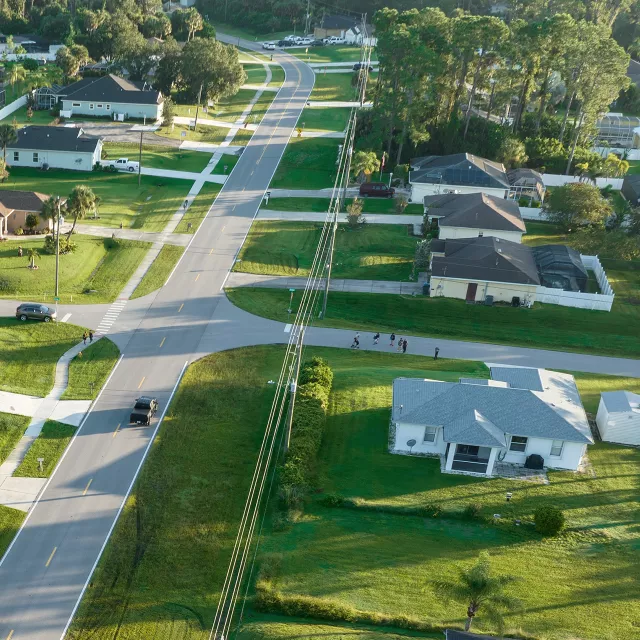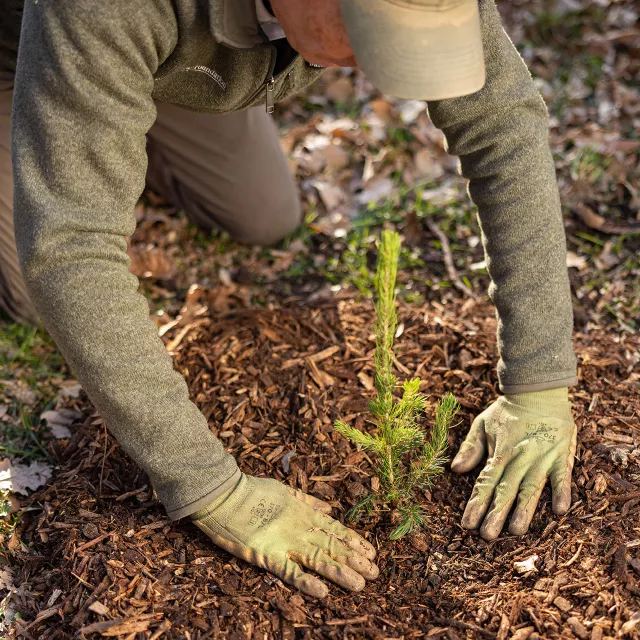It’s important to remember that proper tree care starts when you select a tree.
And what you do to your tree in its first few years of life will affect its shape, strength, and even its lifespan. Following these steps will make sure your tree gets a good start for a healthy life.

Choosing the Right Type of Tree
Proper tree care begins with selecting the right tree and planting it in the right place. Make sure your tree will thrive — especially once fully grown — where you want to plant it. Things to consider include:
- The tree’s purpose. Are you planting it for aesthetics, privacy, shade/energy reduction, windbreak, or as a street tree? Your end goal will determine the suitability of different trees.
- Planting site limitations. What is your hardiness zone? What is the maximum height and spread for a tree in the space? What are the sun exposure and soil conditions?

Right Tree, Right Place
Short, flowering trees don’t clash with overhead utility lines. Large deciduous trees on the southeast, southwest, and west provide cooling shade in the summer but don’t obstruct the warming winter sunlight. An evergreen windbreak to the north blocks cold winds in winter.
Tree Watering & Pruning Tips
How to Water
Tree watering is essential, but exact amounts vary by climate. These guidelines can help.
How to Prune
Using the right pruning techniques is essential for maintaining a healthy tree. See our pruning tips.

Proper Mulching
Mulch is essential for a newly planted tree, as it insulates the soil to buffer against temperature extremes, retains moisture to keep roots hydrated, suppresses weeds to prevent root competition, prevents soil compaction, and reduces the risk of lawn mower damage.
Steps to add mulch around your tree:
- Remove any grass within a 3-foot area (up to 10 feet for larger tree).
- Pour natural mulch such as wood chips or bark pieces 2 to 4 inches deep within the circle.
- Keep the mulch from touching the trunk of the tree.

Tree Health
Tree diseases and pests differ significantly by region, making diagnosis often challenging. Learn how to identify issues affecting your tree's health.
Storm Recovery
When the storm is over and lives are safe, it's time to take care of your trees.
First aid for trees
If you decide to care for a damaged tree yourself, be sure to follow proper safety precautions and best practices.
Prepare for future storms
With proper care, much of the worst damage to trees and property can be prevented.
Contact an Arborist
If you're concerned about your tree’s health, contact an arborist. Certified arborists handle planting, pruning, fertilizing, pest control, and tree removal. Consulting arborists focus on diagnosing issues, recommending treatments, appraising trees, and advising on tree services.